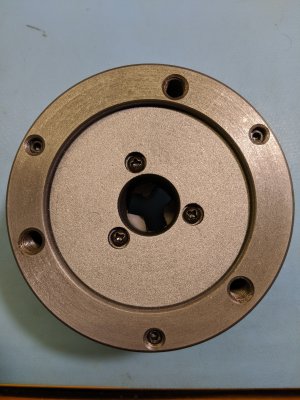- Joined
- Dec 18, 2019
- Messages
- 7,426
I just took a pic of the back of the 3J. Do you see a register? Oh groan, it's the step it self. I was looking for a key for angle. It's rotationally symmetric. I was expecting a pin or notch.There has to be a register, a step, on the nose of the spindle. That step fits into a recess in the back of the chuck. Take a pic of your spindle and let's see what you're dealing with.

Yes my spindle has something that fits this. But apparently there is nothing to locate in an angular sense.
